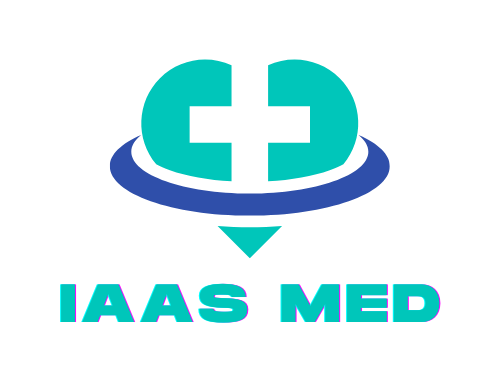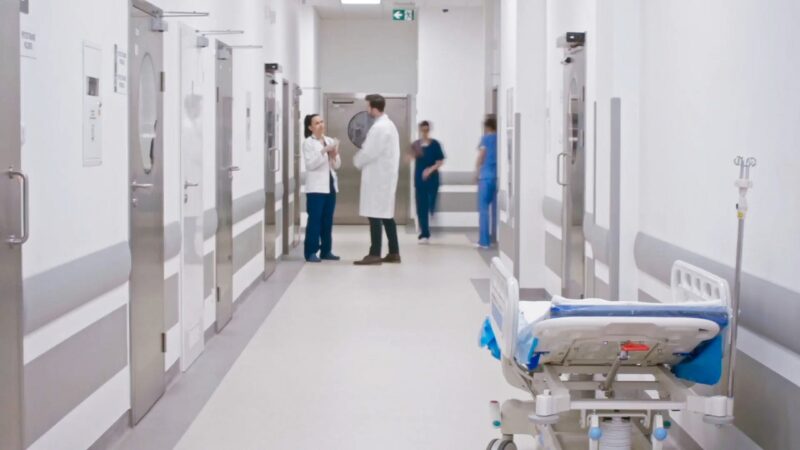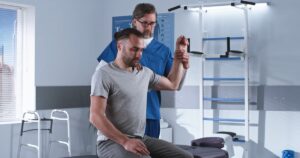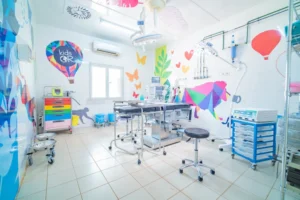Starting work in a hospital marks a major transition. Moving from academic preparation into full-time clinical responsibilities brings a dramatic shift in pace, expectations, and emotional labor.
Many new healthcare professionals find themselves overwhelmed, not due to lack of knowledge, but because of the intensity and unpredictability of the hospital setting. Emotional endurance and adaptability become as important as clinical skills.
Preparation, mentorship, and mental resilience serve as the lifeline through the uncertainty of the first year.
Orientation and Onboarding
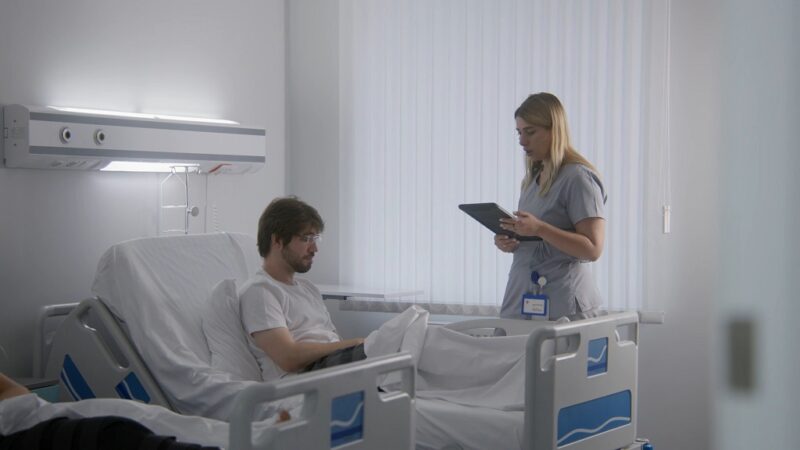
Initial hospital orientation acts as a formal welcome into clinical life. It introduces institutional expectations, safety protocols, electronic health record systems, and basic administrative procedures.
Orientation lays the groundwork for functioning within the hospital structure and introduces new professionals to the pace and flow of care delivery.
Most hospitals conduct structured onboarding programs designed to ease new hires into full responsibilities. These programs often feature preceptorships, where newer staff are paired with experienced clinicians who guide them through their initial weeks or months.
This one-on-one relationship serves as both a teaching opportunity and a support system, reducing anxiety and fostering early professional development.
Professionals looking to strengthen foundational knowledge or expand career options may consider formal education during onboarding or early practice.
Enrolling in an occupational health and safety degree online can enhance awareness of workplace safety, infection control, and compliance protocols, critical aspects of hospital work that often go under-discussed in traditional clinical training.
Shadowing plays a crucial role in acclimating to hospital culture and procedures. Observing day-to-day interactions reveals subtleties not taught in school.
Professional routines, charting habits, interdepartmental communication, and patient interactions are best learned by watching seasoned practitioners.
Key benefits of shadowing include:
- Exposure to common clinical workflows and documentation styles
- Real-time observation of patient assessments and care planning
- Opportunities to learn efficient communication strategies with staff and patients
- Insights into handling high-pressure or emotionally intense scenarios
Patient load is typically introduced in stages. Starting with lower-acuity patients allows space to apply skills gradually and ask questions without overwhelming pressure.
Over time, complexity increases. By the second or third month, most new professionals find themselves responsible for managing more demanding situations, but with increased confidence.
The Learning Curve

Real-world hospital practice quickly shows how clinical theory often falls short when applied in fast-paced, unpredictable environments.
Textbooks provide structure, but hospital work demands rapid decisions, adaptability, and calm under pressure. No academic scenario can fully prepare for the urgency and volume of real patient care.
Protocols shift with evolving evidence, and each patient presents variables that don’t fit cleanly into predefined templates.
Unexpected situations frequently arise. One moment may involve routine vitals; the next could require immediate intervention due to rapid deterioration.
In such moments, there’s little time for textbook consultation. Instinct, reinforced by observation and trial, takes over. Every day presents a new learning opportunity.
Mistakes happen, especially in the first year. What defines a strong new healthcare professional is not flawlessness but the response after an error.
Growth begins with acknowledging knowledge gaps, asking questions, and seeking clarification.
There is strength in humility and wisdom in admitting when help is needed. Learning becomes a constant, dynamic cycle.
To navigate this curve more effectively, new professionals benefit from focusing on several core principles:
- Admit what you don’t know. Pride is a barrier to safety and growth.
- Ask early and often. Colleagues are more forgiving when questions are asked proactively than after mistakes occur.
- Request feedback. Constructive input helps build clinical awareness and improve habits.
- Observe patterns. Repetition creates mental shortcuts that speed up recognition and action.
- Reflect on daily experiences. Even brief personal reflection can clarify what worked and what didn’t.
Building Clinical Confidence

New professionals often feel unsteady during early encounters with acutely ill patients. Textbook knowledge alone does not prepare someone for the rapid decision-making required during emergencies or the pressure of dealing with critical situations.
Applying skills in real-time, with lives at stake, challenges even the most prepared graduate. Confidence builds gradually through hands-on experience and reflection.
Daily routines are powerful tools in skill development. Repetition is essential. Carrying out assessments repeatedly, managing handovers with clarity, and applying clinical reasoning regularly helps cement both knowledge and confidence.
Familiarity with processes reduces hesitation and strengthens instincts.
Here are some daily habits that contribute to confidence:
- Performing head-to-toe assessments at the beginning of each shift
- Participating actively during patient handoffs and clarifying uncertainties
- Asking for feedback on clinical decisions and documentation
- Reviewing cases at the end of shifts to evaluate what went well and what needs work
Small achievements, like successfully placing an IV line or interpreting vital signs early, serve as confidence anchors. Each win signals progress and diminishes doubt.
Mentorship bridges gaps between classroom knowledge and hospital demands. Trusted colleagues provide more than answers, they offer reassurance and personal strategies.
Asking questions, observing techniques, and inviting constructive criticism turn mentors into essential guides.
Emotional Resilience and Mental Health

Emotional stress in hospitals affects even the most seasoned professionals. For first-year employees, the sudden exposure to suffering, loss, and trauma can feel overwhelming.
Sleepless nights, prolonged shifts, and emotional strain compound quickly. Mental fatigue builds faster when combined with physical exhaustion.
Compassion fatigue is not an abstract concept, it is a real threat to wellness and retention.
Establishing emotional boundaries is a survival skill. Caring does not mean becoming emotionally entangled in every case.
Healthy distance allows healthcare workers to stay effective without losing empathy. Methods of self-care and reflection help maintain that balance.
Strategies for managing emotional strain include:
- Setting boundaries between work and personal life
- Engaging in reflective writing or journaling after difficult shifts
- Joining support groups or peer debriefing sessions
- Seeking professional therapy when needed
- Scheduling regular physical activity and maintaining proper nutrition
Workplace culture adds another layer. Toxic dynamics—like bullying or hazing—still exist in some clinical environments.
The phrase “nurses eat their young” captures the harsh treatment new staff sometimes endure. Awareness helps, but institutional enforcement of respectful conduct policies remains essential.
Communication and Teamwork

Hospital care relies on teams, not individuals. Success depends on efficient, respectful collaboration with a wide range of professionals:
- Doctors
- Nurses
- Aides
- Therapists
- Pharmacists
- Administrative staff
Miscommunication puts patients at risk, while clear dialogue ensures safety, efficiency, and morale.
Learning to integrate into a pre-existing team takes patience. Observation reveals how conversations unfold, who takes the lead, and how roles overlap or complement one another.
Listening closely before speaking fosters credibility and rapport.
To effectively engage in team communication:
- Attend shift huddles or interdisciplinary meetings consistently
- Use closed-loop communication to confirm tasks and orders
- Clarify tasks during handovers and avoid assumptions
- Learn names and roles of colleagues in the unit
- Ask for clarification early rather than after a mistake occurs
Culture cues matter. Some teams value directness, while others favor hierarchy and subtlety. Being attuned to these nuances improves rapport and reduces misunderstandings.
Asking appropriate questions, thanking team members, and following through on shared responsibilities contribute to a positive presence.
Strong relationships take time. Shared difficult moments, reliable performance, and mutual respect form the base. Over time, colleagues often become trusted advisors and emotional allies, turning professional partnerships into dependable bonds.
Time Management and Organization
First-year professionals quickly learn that technical ability without time management leads to chaos.
Keeping up with patient care, documenting accurately, attending meetings, and protecting one’s own health demands efficiency. Without a plan, tasks pile up and quality suffers.
Creating a consistent daily workflow becomes a safeguard. Structuring each shift with intention helps reduce surprises and free up mental space for decision-making.
By prioritizing tasks early, professionals prevent late documentation, missed meds, or forgotten follow-ups.
Key time management strategies include:
- Reviewing patient charts before rounds to prepare
- Setting task reminders or alarms for timed interventions
- Grouping tasks geographically by room or patient
- Completing documentation in real-time instead of end-of-shift marathons
- Having a go-to checklist for start and end of shift
Being proactive proves more sustainable than constantly putting out fires.
Anticipating patient needs, preparing supplies ahead of time, and organizing workflow according to urgency saves energy and reduces avoidable stress.
Summary
First-year hospital work transforms a student into a professional. Lessons extend far beyond textbooks and lectures. Resilience becomes muscle memory. Confidence builds with repetition and support.
No one becomes an expert in one year, but foundational habits form. Seeking mentorship, practicing self-care, and maintaining a learner’s mindset prepare professionals for long and fulfilling careers in healthcare. Growth may be uneven and slow, but it always moves forward.
Related Posts:
- First Time Under the Knife: What to Expect Before,…
- 10 Smart Ways to Cut Hospital Costs During Planned Surgery
- Unlock Your Potential: 6 Steps to Start Your Career…
- 9 Home Remedies For Menorrhagia - Ease Your Periods…
- Why Your Healthcare Job Application Goes Unnoticed?…
- How to Integrate Remote Medical Scribes with Your EHR System
